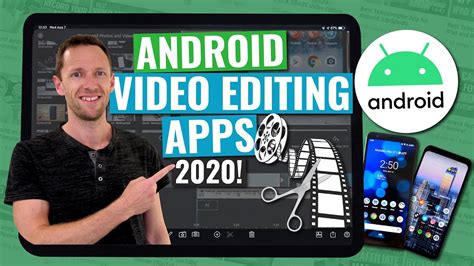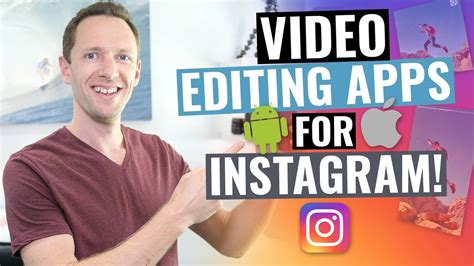Choosing the right photo editing app is crucial for both casual users and professional photographers, but ensuring the software is safe and reliable is equally important. In today’s digital age, where countless apps are available, it’s easy to fall into the trap of downloading software that could compromise your computer’s security. This article explores the top five photo editing apps that not only offer powerful editing tools but also prioritize user safety. We’ll review each app’s features, compare their pros and cons, and provide insights into their compatibility, pricing, and security, helping you make an informed decision on the best photo editing software for your needs.
Let’s investigate this topic extensively with zokablog.com
1. Introduction to the importance of choosing safe software for photo editing.
In the world of digital creativity, photo editing software plays a crucial role in transforming ordinary images into captivating visuals. However, with the abundance of options available, the importance of choosing safe software cannot be overstated. Downloading an unsafe or unreliable app can expose your computer to malware, viruses, and data breaches, putting your personal information and files at risk. Additionally, some apps may have hidden costs or intrusive ads that can disrupt your editing experience and compromise your privacy.
Selecting safe software is not just about protecting your computer but also about ensuring that the app you choose meets your creative needs without unnecessary risks. Safe photo editing apps are developed by reputable companies that prioritize user security and provide regular updates to address vulnerabilities. They also comply with data privacy regulations, ensuring that your personal information remains secure.
In this article, we’ll guide you through the top five photo editing apps that offer robust features while maintaining a strong commitment to safety. By understanding the importance of choosing secure software, you can confidently select an app that enhances your creativity without compromising your security or peace of mind.

2. Brief overview of the criteria used to select the top apps.
When selecting the top photo editing apps, several key criteria were considered to ensure both functionality and safety. First, the reputation of the developer was examined, prioritizing apps created by established companies known for their commitment to user security. The app’s features were also evaluated, with a focus on the availability of advanced editing tools, ease of use, and overall user experience.
Security and privacy were paramount in the selection process. Apps were chosen based on their compliance with data protection standards and their ability to safeguard user information. Regular updates and transparent privacy policies were indicators of the app’s reliability.
Compatibility with various operating systems, including Windows, macOS, iOS, and Android, was another important factor, ensuring that users can access the app on their preferred devices. User reviews and ratings from credible sources provided insights into real-world experiences, helping to identify any potential issues.
Lastly, the pricing models were assessed, with a preference for apps offering clear and fair pricing, whether through free versions, in-app purchases, or paid subscriptions.

3. Detailed review of each photo editing app, including features and user interface.
Adobe Photoshop Express: A streamlined version of Adobe’s flagship software, Photoshop Express offers a powerful set of tools for mobile and desktop users. Its user-friendly interface allows for quick adjustments like cropping, straightening, and color correction. Advanced features include filters, blemish removal, and text overlays. The app is regularly updated and backed by Adobe’s robust security measures, making it a reliable choice for both casual and professional users.
GIMP: A free, open-source photo editor, GIMP is highly versatile and offers many of the same features as premium software. It has a customizable interface that can be tailored to your workflow, supporting tasks like retouching, image composition, and color management. GIMP’s community-driven development ensures consistent updates, though users may need to exercise caution when downloading from unofficial sources to avoid security risks.
Canva: Known for its simplicity and accessibility, Canva is perfect for users who want to create visually appealing designs without a steep learning curve. It offers a range of templates, filters, and editing tools within an intuitive drag-and-drop interface. While the free version provides substantial functionality, a premium subscription unlocks additional features and resources.
Pixlr: Pixlr is a web-based photo editor that combines ease of use with advanced editing tools. It offers both basic and pro versions, catering to different skill levels. The app supports layers, effects, and a variety of adjustments, making it a strong contender for users who prefer editing directly in their browser.
Snapseed: Developed by Google, Snapseed is a highly regarded mobile app that offers professional-level editing tools in a simple, touch-friendly interface. Features like selective adjustments, healing, and filters allow users to enhance photos with precision. Snapseed’s strong security and regular updates make it a trustworthy option for mobile photo editing.

4. Comparison of pros and cons between the different apps.
Adobe Photoshop Express
Pros: Powerful features, intuitive interface, backed by Adobe’s security.
Cons: Some advanced tools are limited compared to full Photoshop.
GIMP
Pros: Free, open-source, highly customizable with a wide range of features.
Cons: Steeper learning curve, potential security risks if not downloaded from the official source.
Canva
Pros: Easy to use, ideal for beginners, extensive library of templates and design elements.
Cons: Limited advanced editing capabilities, many features locked behind a paywall.
Pixlr
Pros: Web-based, accessible from any device with internet, supports layers and advanced editing.
Cons: Ads in the free version, requires a stable internet connection, some features only available in the pro version.
Snapseed
Pros: Professional-grade tools, intuitive touch interface, strong security and frequent updates.
Cons: Limited to mobile devices, lacks some advanced features available in desktop editors.
Each app offers a unique balance of features, ease of use, and security, catering to different user needs—from professional editing to quick, casual tweaks.
5. Information on compatibility with various operating systems (Windows, macOS, iOS, Android).
Adobe Photoshop Express is compatible with Windows, macOS, iOS, and Android, making it a versatile option for users across different platforms. Whether you’re working on a desktop or mobile device, the app delivers a consistent experience with all its essential features accessible on each system.
GIMP is available for Windows, macOS, and Linux, offering extensive cross-platform support. However, it does not have an official mobile version, limiting its use to desktop and laptop environments.
Canva operates smoothly on both desktop and mobile platforms, including Windows, macOS, iOS, and Android. Its web-based nature ensures that it can be accessed from any device with a browser, providing flexibility in where and how you work.
Pixlr is a web-based application, making it compatible with any device that has a modern browser, including Windows, macOS, iOS, and Android. This ensures broad accessibility without the need for downloads.
Snapseed is exclusive to mobile devices, supporting both iOS and Android. Its touch-friendly design is optimized for mobile editing, making it a top choice for users who prefer editing on the go.
6. Insights into user reviews and ratings from reliable sources.
User reviews and ratings offer valuable insights into the real-world performance and satisfaction levels of these photo editing apps. Adobe Photoshop Express consistently receives high ratings across platforms like the App Store and Google Play, with users praising its powerful features and ease of use. However, some users note that it lacks the depth of the full Photoshop, making it more suitable for quick edits rather than complex projects.
GIMP enjoys strong support from its user community, particularly among those who appreciate its open-source nature and extensive feature set. Reviews highlight its capabilities as a free alternative to expensive software, though some users find the interface challenging to navigate without prior experience.
Canva is widely loved for its simplicity and accessibility, earning top marks for ease of use, especially among beginners and non-designers. User feedback often highlights the abundance of templates and design elements, though some express frustration with the limitations of the free version.
Pixlr receives positive reviews for its flexibility and browser-based access, with users appreciating the ability to edit photos without downloading software. However, the presence of ads in the free version and occasional performance issues are common complaints.
Snapseed is highly rated by mobile users, who appreciate its professional-grade tools in a free app. Reviews often commend its intuitive interface and powerful editing options, though some users wish for more features found in desktop editors.
7. Security considerations: analysis of app safety and data privacy features.
When evaluating the safety and data privacy of photo editing apps, several factors come into play. Adobe Photoshop Express benefits from Adobe’s established security protocols and frequent updates. It adheres to stringent data privacy standards, ensuring user data is protected and not misused. The app’s robust security measures are reinforced by Adobe’s reputation for maintaining user trust.
GIMP is an open-source application, meaning its code is publicly available for review. While this transparency can enhance security through community scrutiny, users must be cautious about downloading the app from unofficial sources to avoid potential malware. The official GIMP site ensures that users receive a secure and verified version.
Canva places a strong emphasis on user privacy, with clear privacy policies outlining data collection and usage practices. The app implements encryption to protect user data, though some users may be concerned about the data stored in the cloud.
Pixlr offers security features like SSL encryption to protect data during transmission. However, the presence of ads in the free version and the need for a stable internet connection may raise concerns about data tracking and privacy.
Snapseed, developed by Google, benefits from Google’s extensive security infrastructure. The app is designed with data protection in mind, using encryption and regular updates to safeguard user information. The strong backing of Google provides additional assurance of its commitment to privacy and security.
8. Pricing models: free vs. paid versions, in-app purchases.
Adobe Photoshop Express offers both a free version and a paid subscription. The free version provides essential editing tools, while the paid version unlocks additional features, such as advanced filters and more storage options. The subscription also removes ads and provides access to premium content.
GIMP is completely free and open-source, with no hidden costs or premium versions. It offers a comprehensive set of tools without requiring any in-app purchases, making it an excellent choice for users looking for a cost-effective solution.
Canva operates on a freemium model. The free version includes a wide range of templates and basic editing tools. The paid subscription, Canva Pro, offers advanced features, additional design elements, and increased storage, along with an ad-free experience.
Pixlr provides a free version supported by ads and includes a good range of features. The premium subscription, Pixlr Pro, removes ads and adds advanced editing tools and effects.
Snapseed is entirely free, with no in-app purchases or premium versions. It offers all its features without any cost, making it a strong option for mobile users seeking comprehensive editing capabilities without financial commitment.
9. Recommendations based on specific user needs (casual users, professional photographers).
For casual users seeking an easy-to-use photo editing app, Canva and Snapseed are excellent choices. Canva offers a user-friendly interface with a variety of templates and design elements that cater to beginners and those looking to create visually appealing content quickly. Its simplicity and versatility make it ideal for social media posts, flyers, and basic photo edits. Snapseed, on the other hand, provides a range of professional editing tools in a mobile-friendly format, perfect for users who want to enhance their photos with precise adjustments without a steep learning curve.
For professional photographers, Adobe Photoshop Express and GIMP stand out. Adobe Photoshop Express delivers powerful editing capabilities and integrates seamlessly with other Adobe products, making it a solid choice for professionals who need advanced features and reliable performance. GIMP offers a comprehensive set of tools similar to high-end software but at no cost, which is valuable for those who need extensive customization and in-depth editing options. Pixlr also appeals to professionals looking for a web-based solution with robust editing features and flexibility across different devices. Each of these apps meets varying needs, providing tailored solutions for both casual and professional use.
10. Conclusion highlighting the best overall app and key takeaways for users.
In conclusion, selecting the right photo editing app depends on your specific needs, whether you’re a casual user or a professional photographer. Among the apps reviewed, Snapseed emerges as the best overall choice for its balance of powerful features and user-friendly interface. It offers comprehensive editing tools and a seamless experience without any cost, making it ideal for mobile users who seek high-quality results without financial commitment.
For those who require more advanced features and integration with other tools, Adobe Photoshop Express stands out as a strong option, particularly for users already within the Adobe ecosystem. Its robust feature set and reliable performance cater well to both casual and professional needs, though it comes with a subscription cost for accessing premium features.
GIMP is a notable mention for professionals looking for a free, open-source solution with extensive capabilities. Its rich feature set and no-cost model make it an attractive alternative to expensive software.
Ultimately, each app has its strengths, and the best choice will depend on your editing requirements, budget, and preferred platform. Prioritizing safety and functionality will ensure you select an app that meets your needs effectively.
zokablog.com